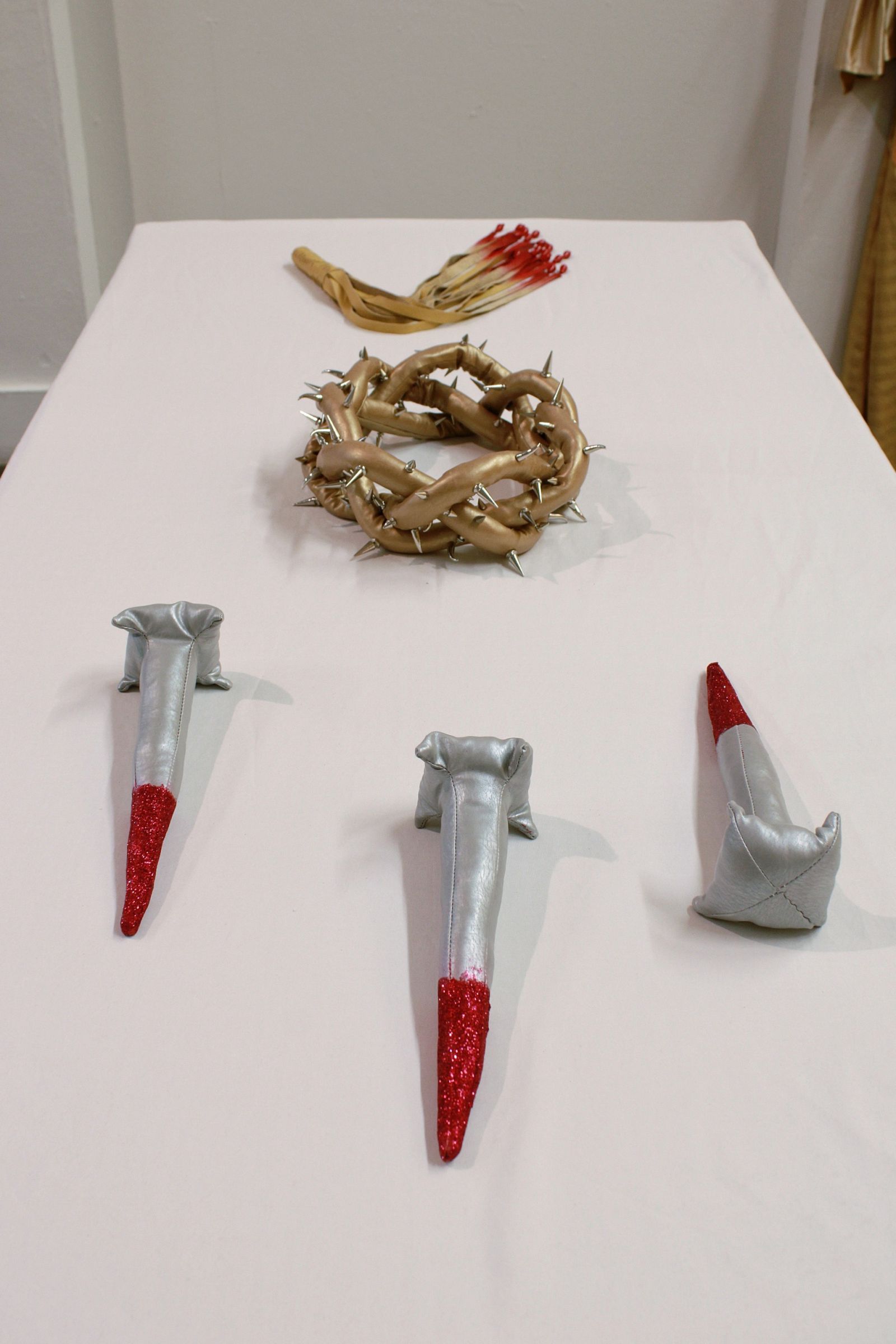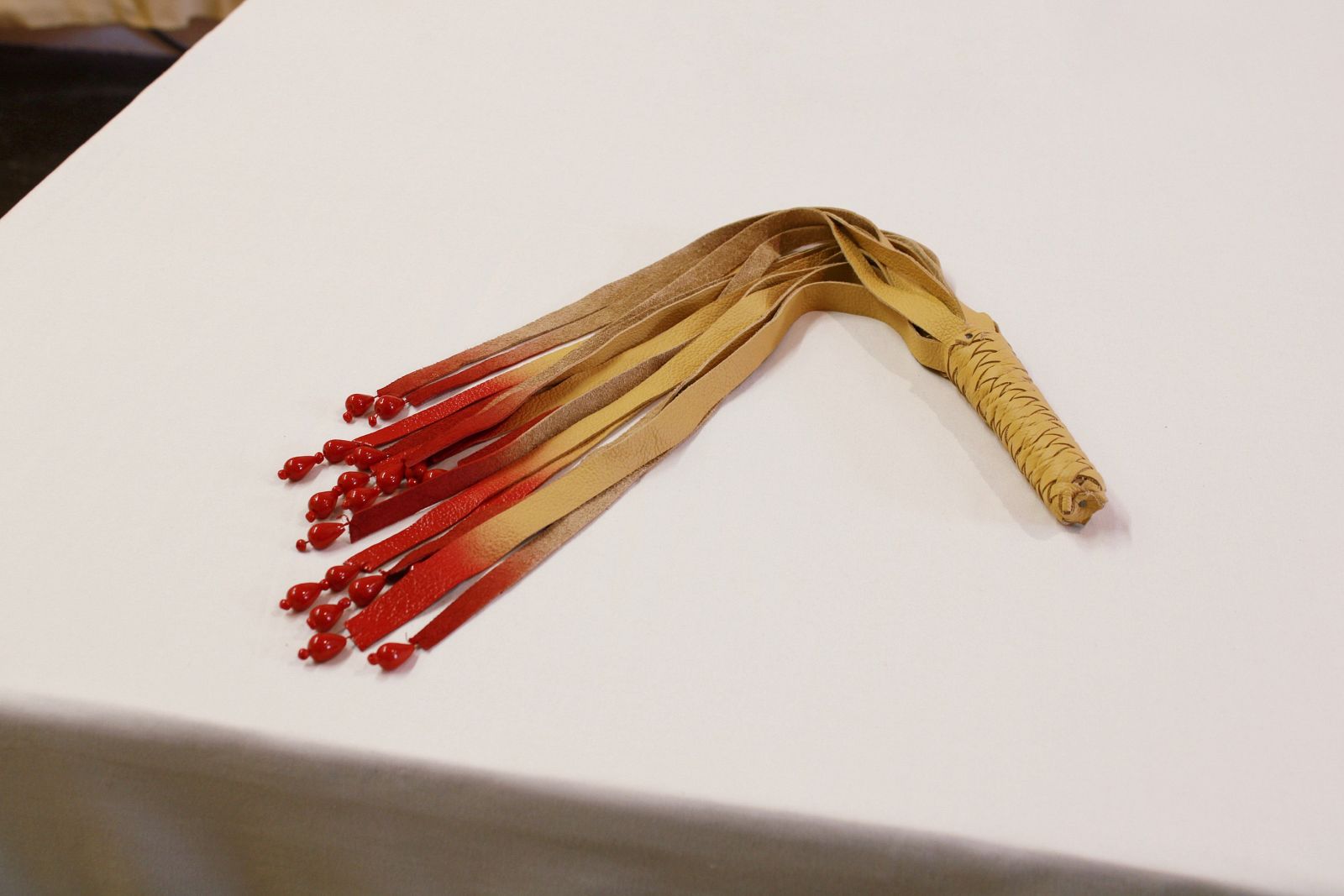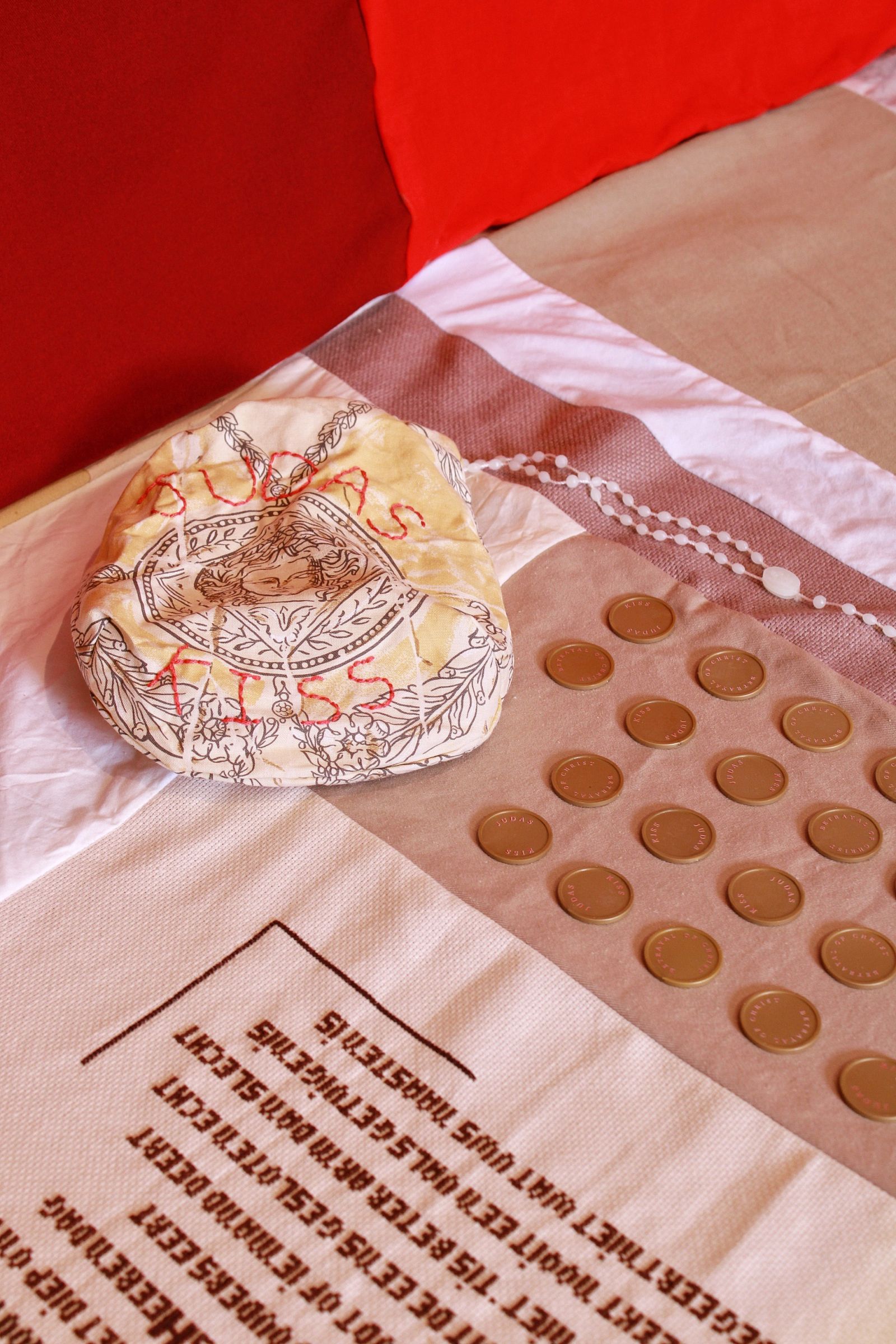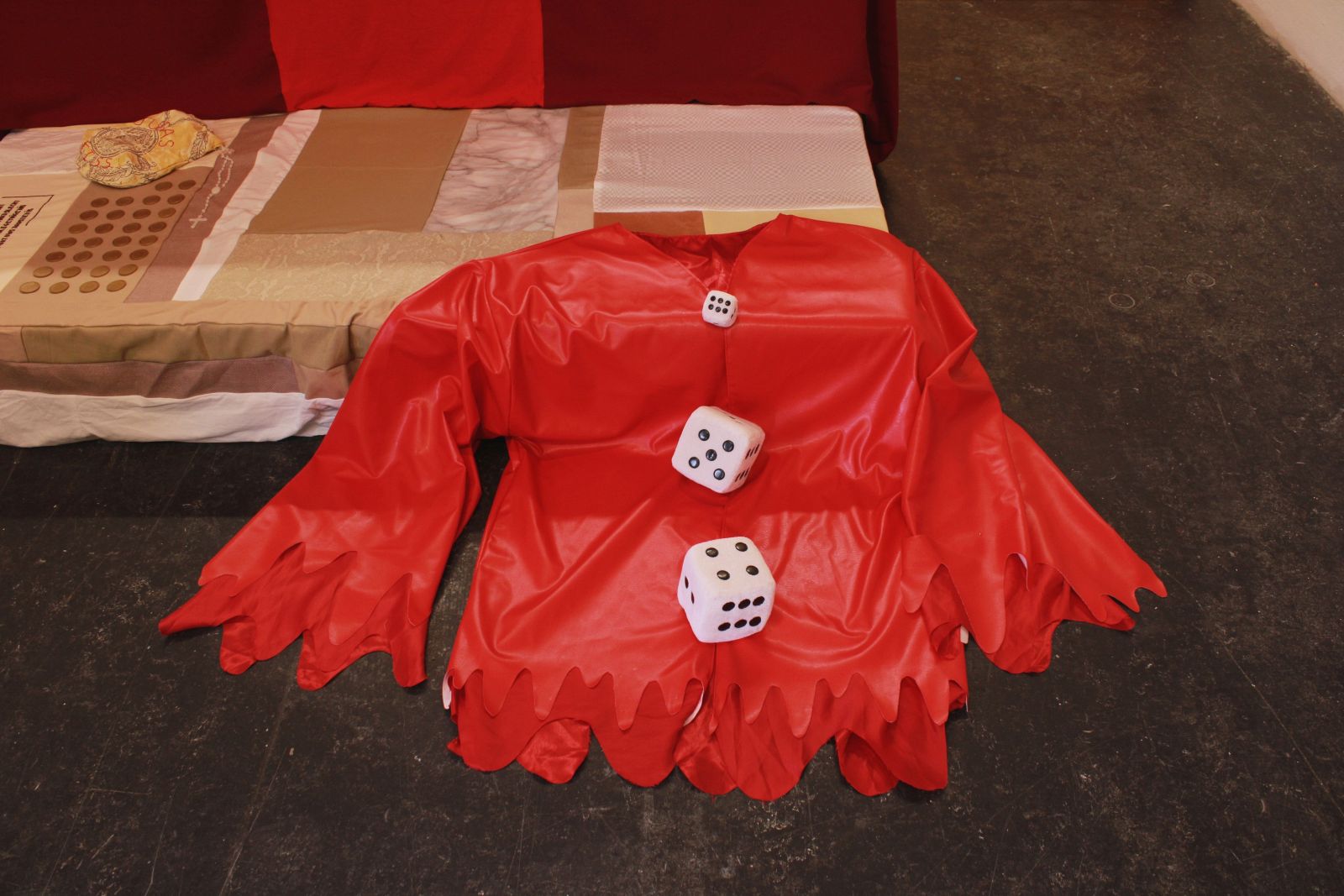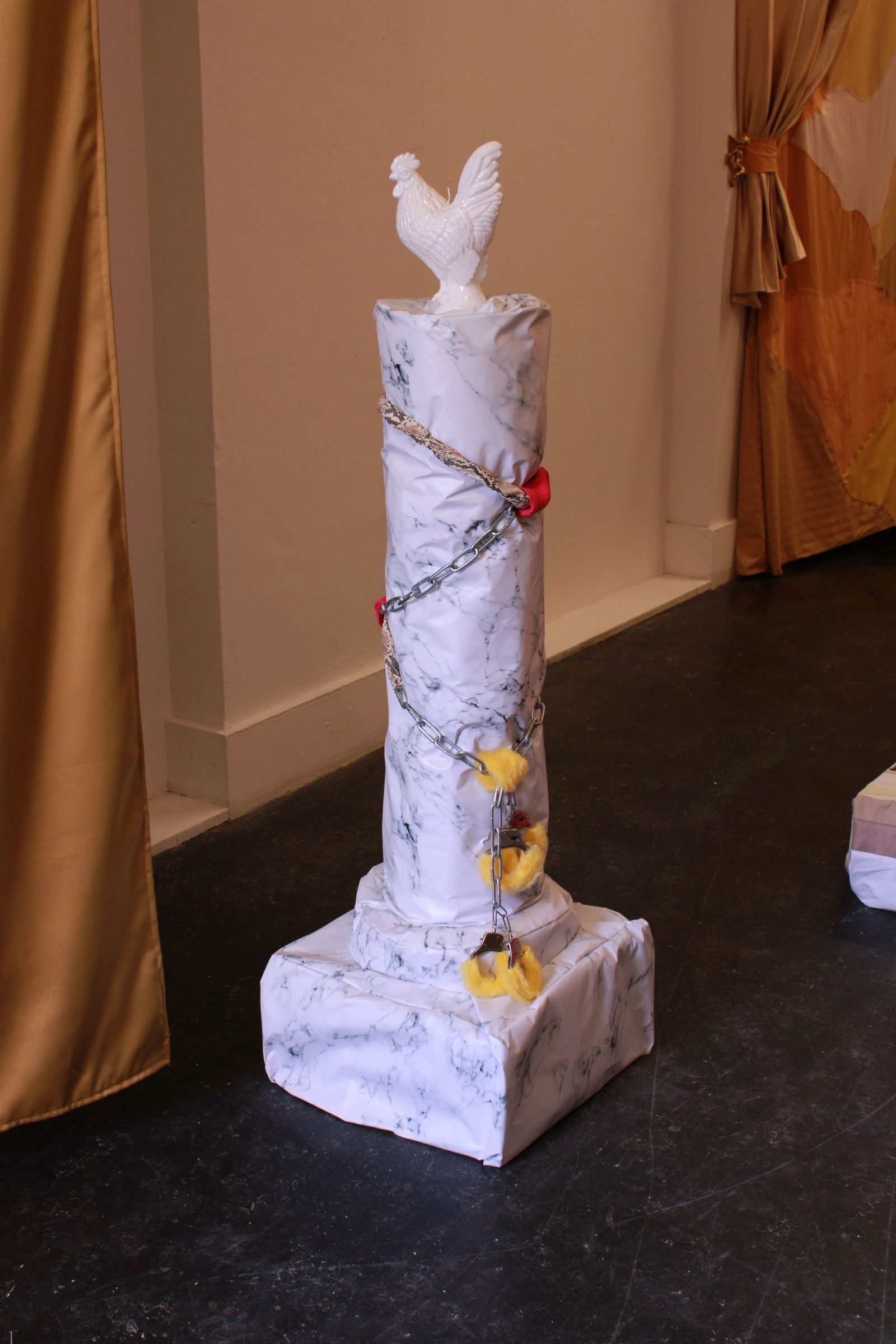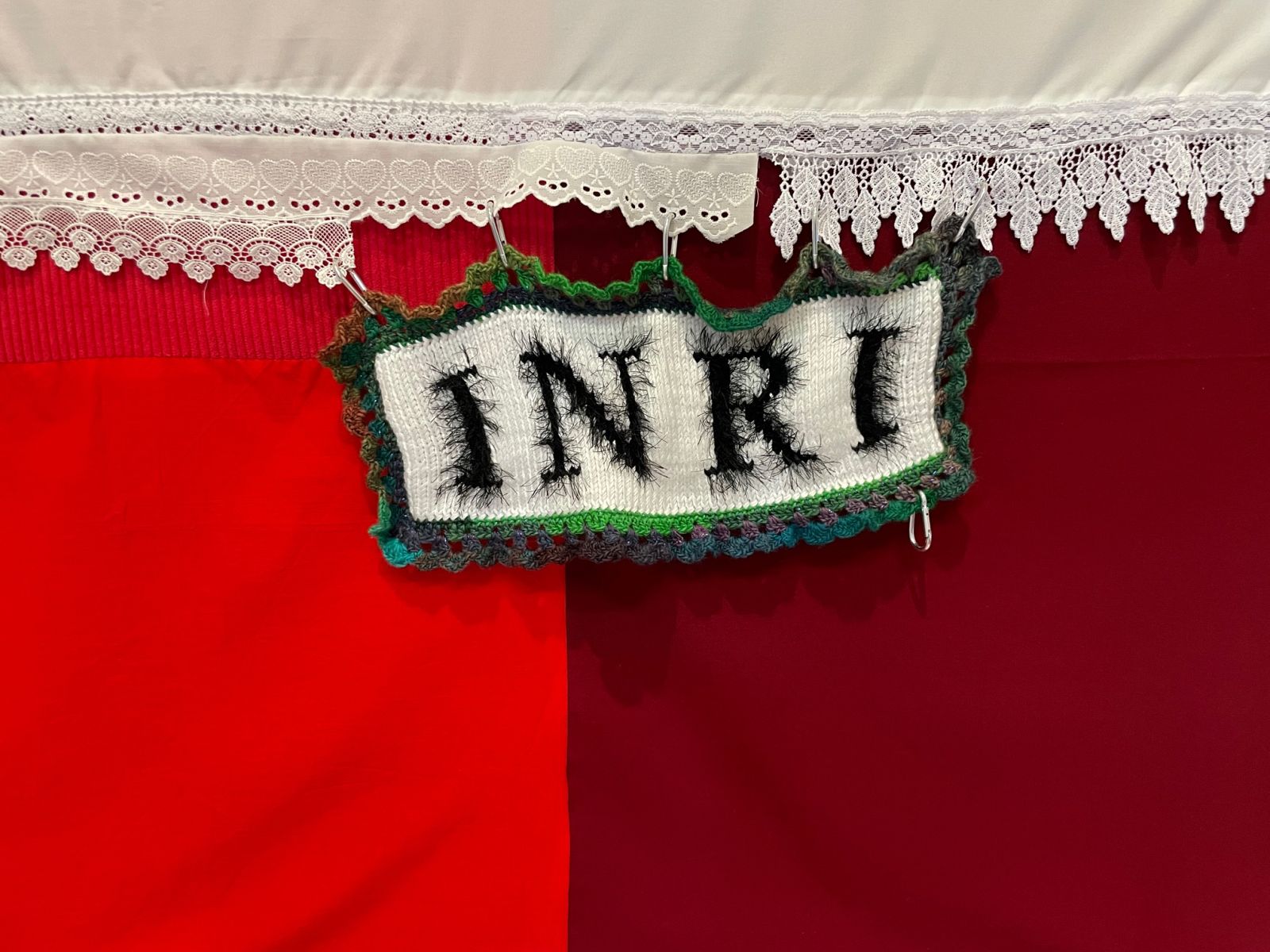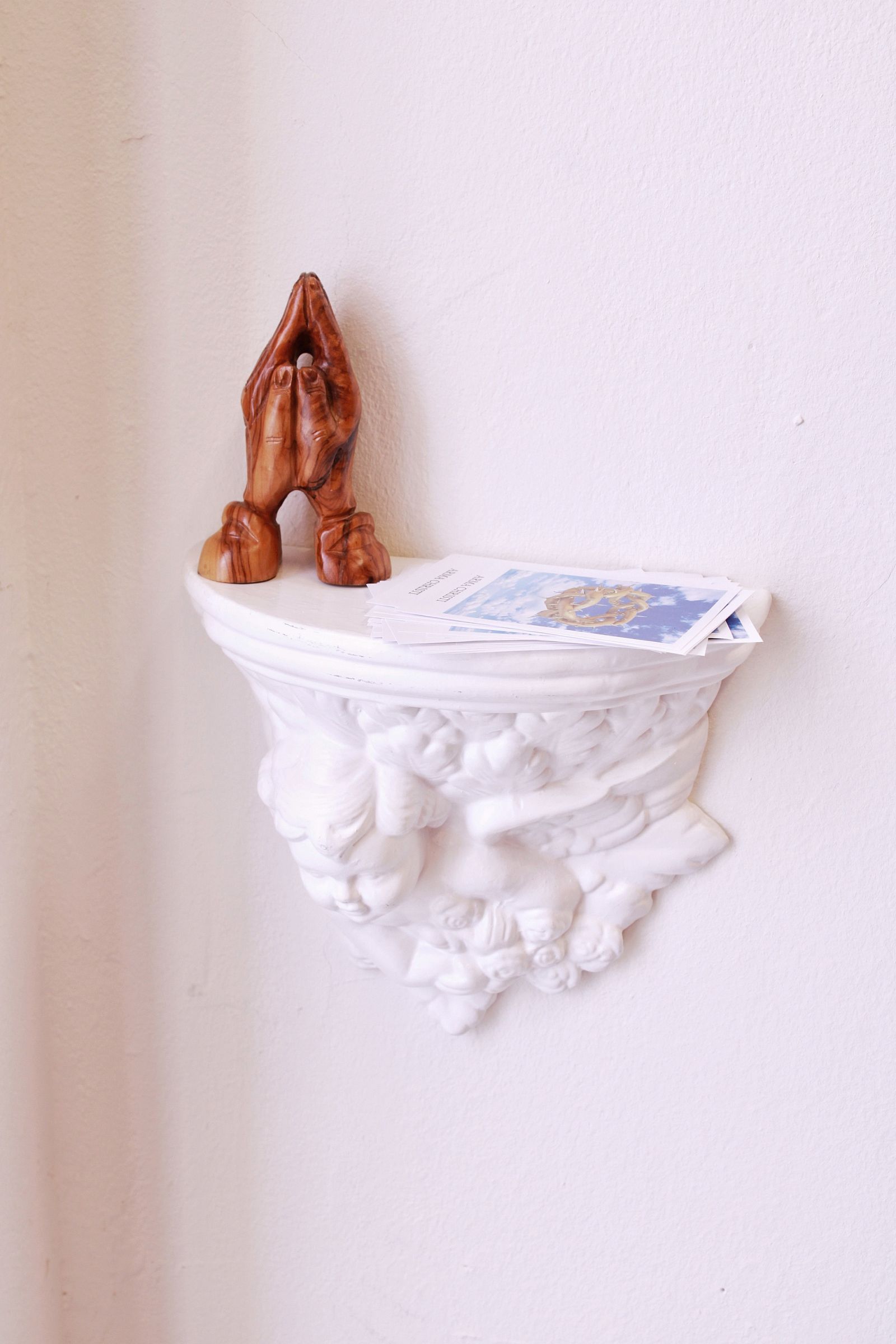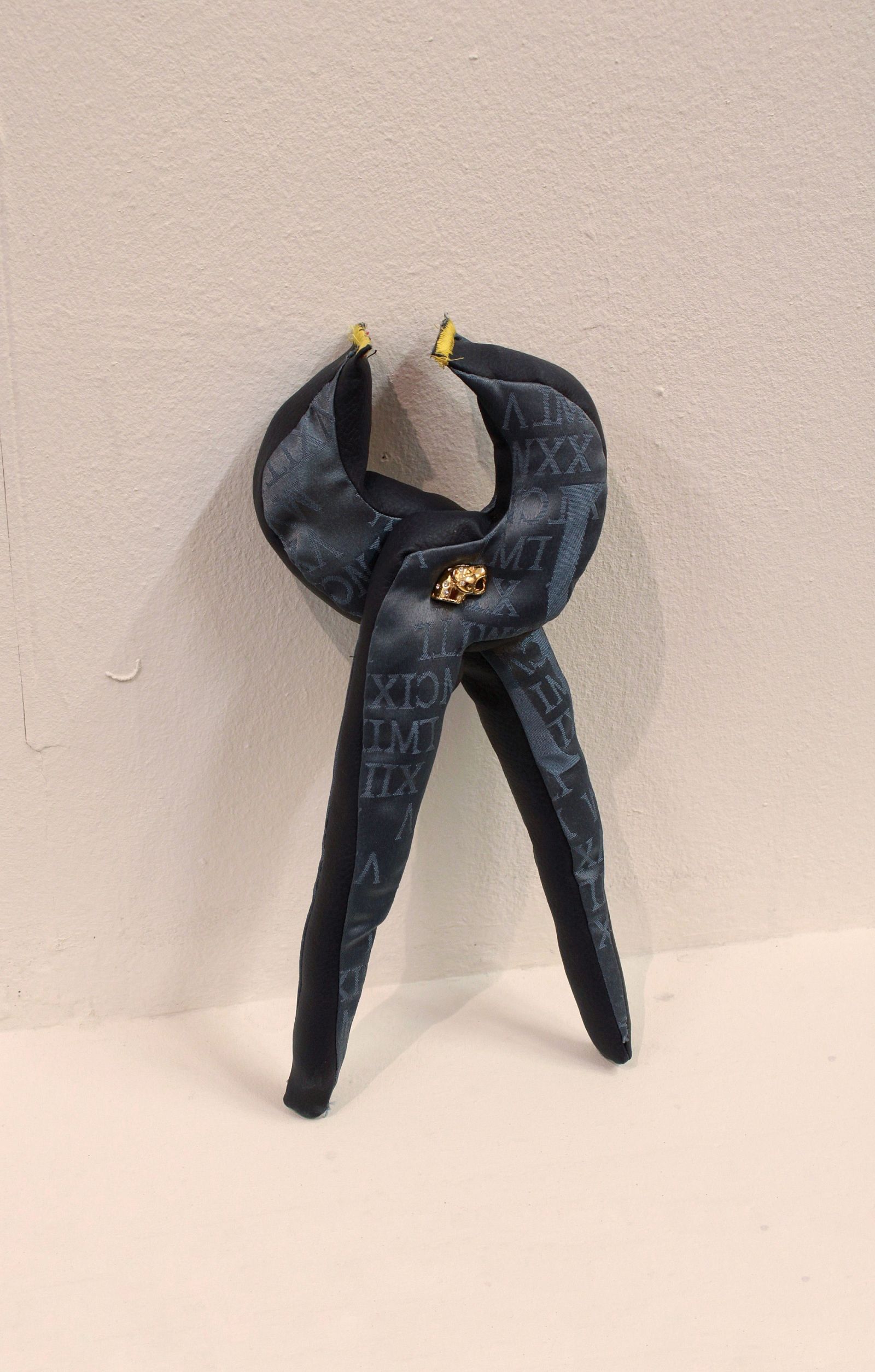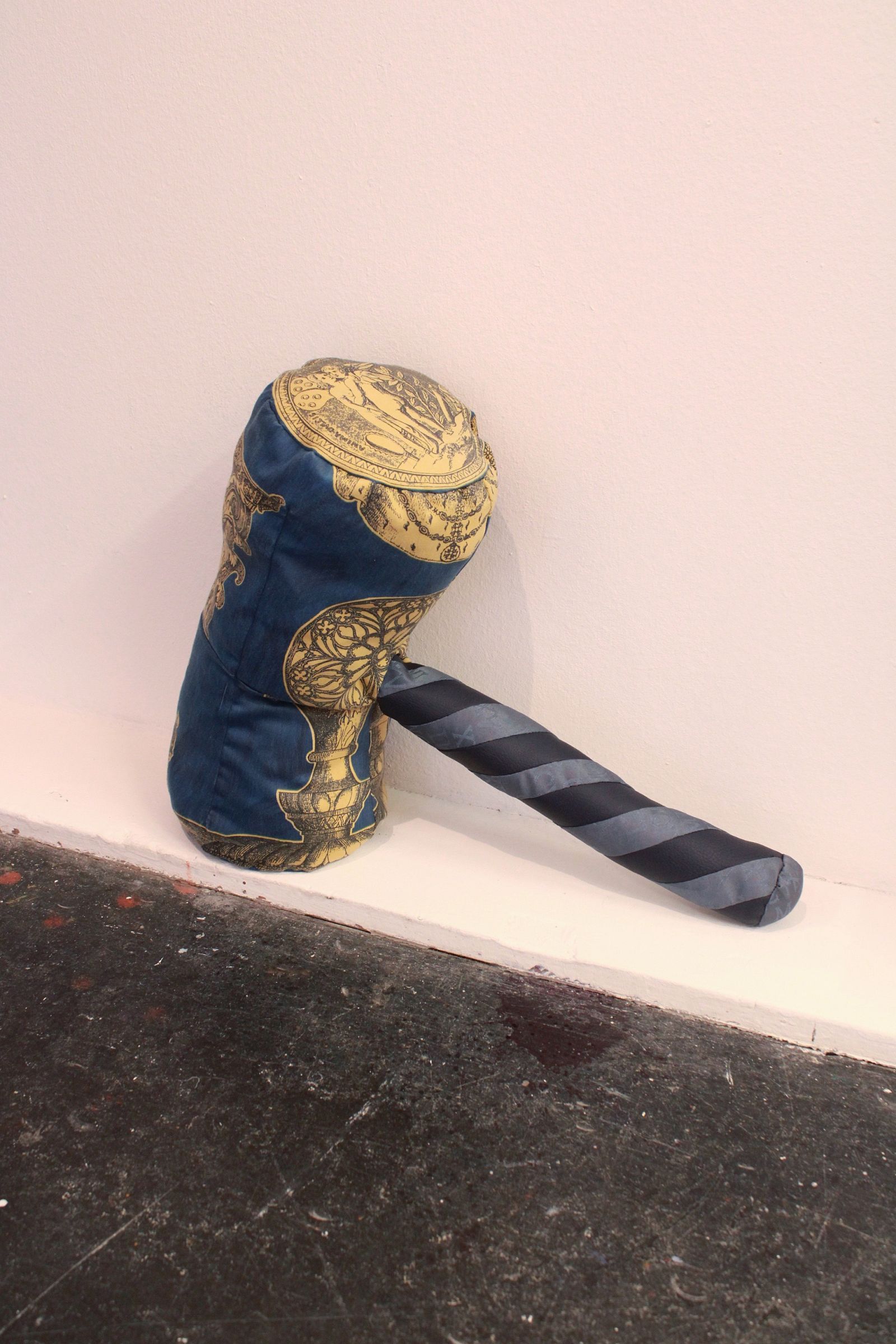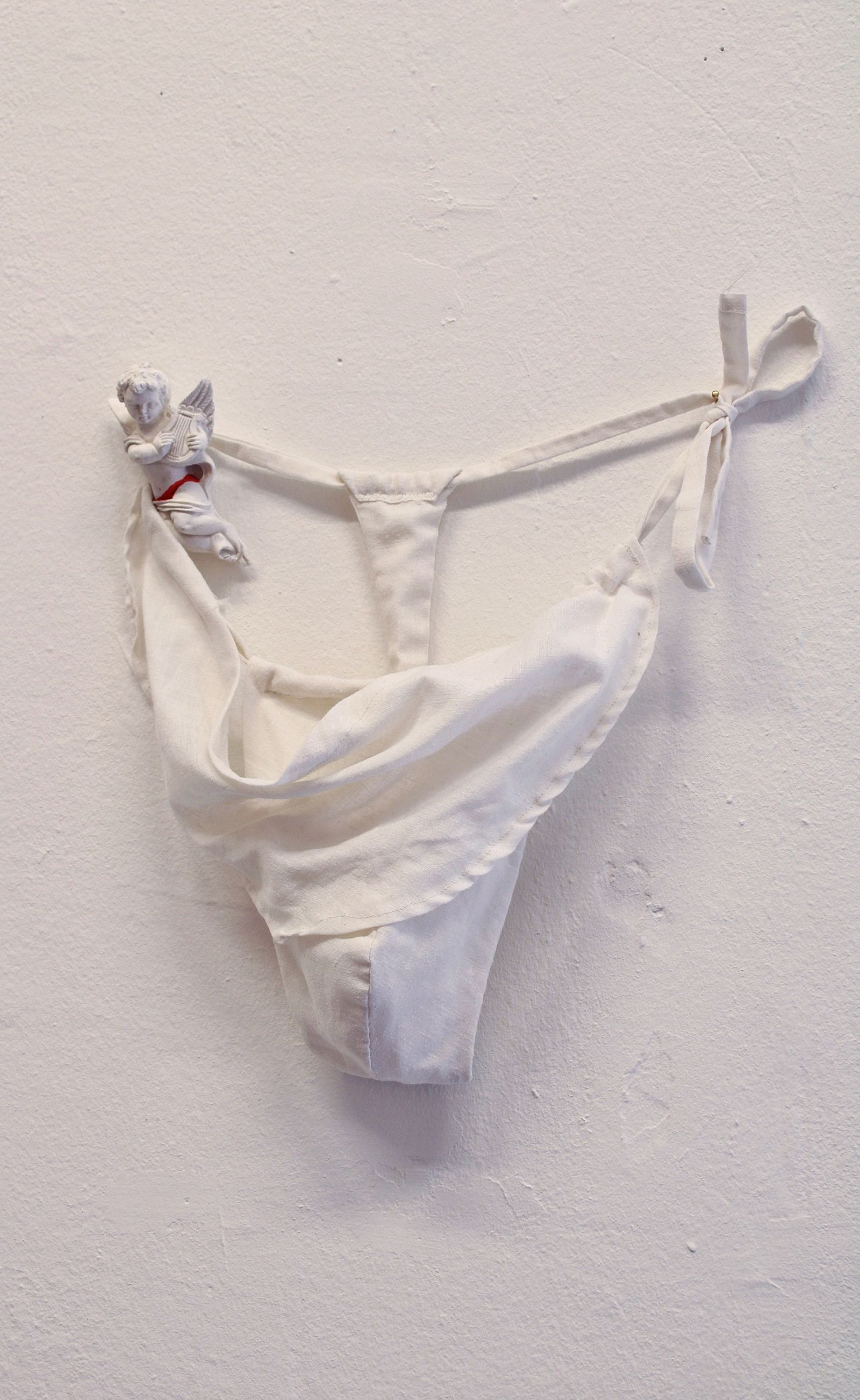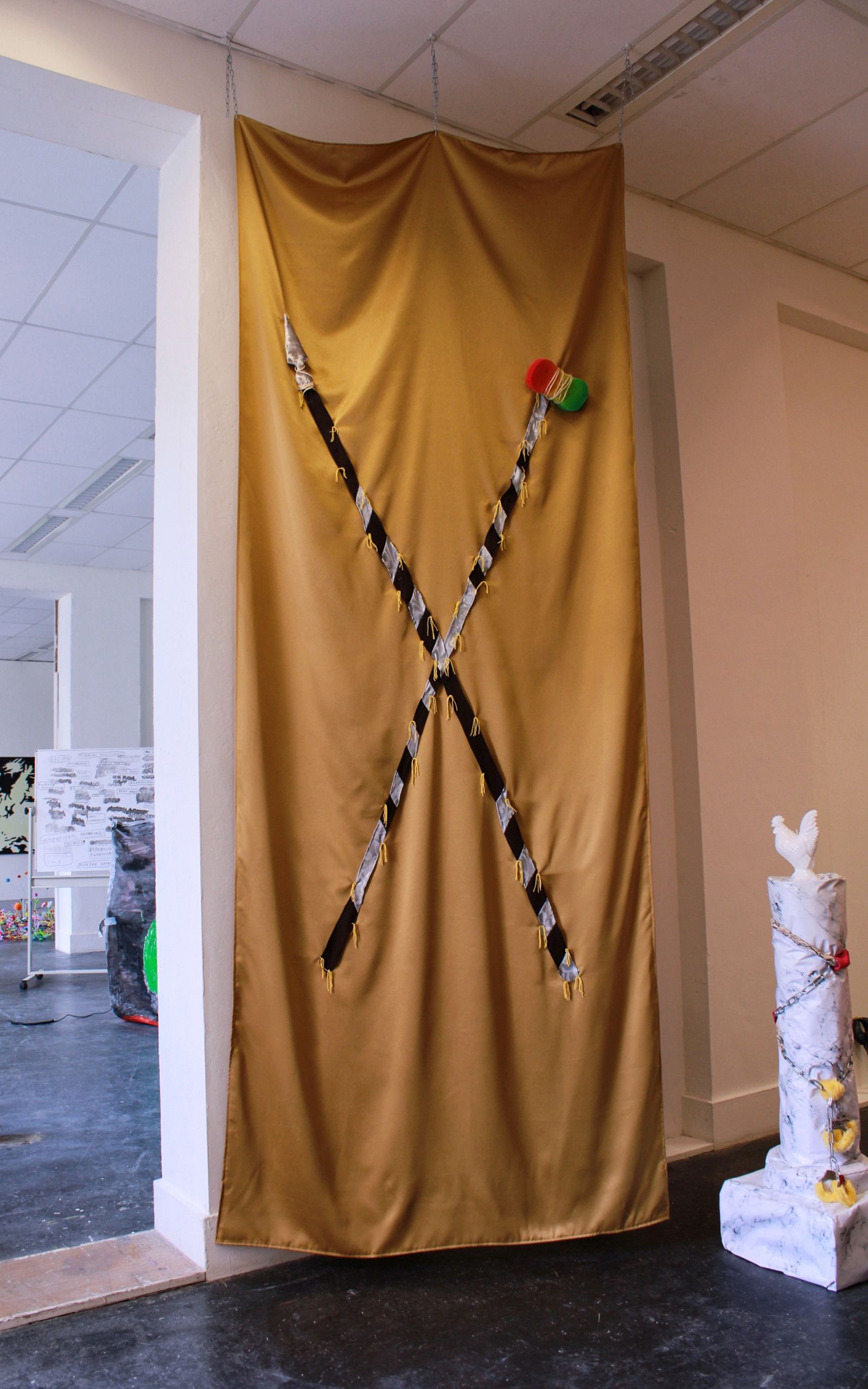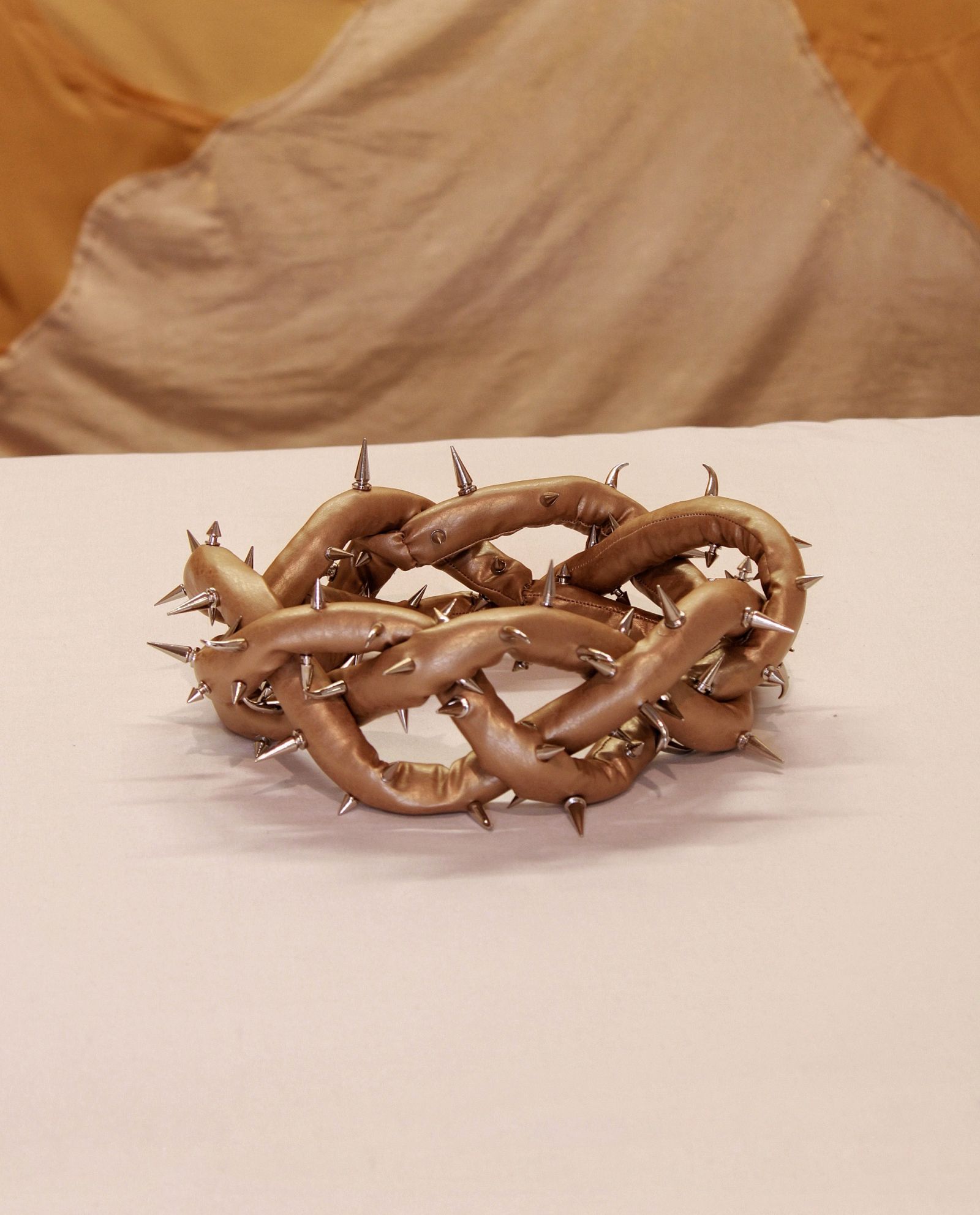
Giovanni Pilato
Keywords: Catholic, Camp, Passion
In the installation, the Instruments of the Passion of Christ (Arma Christi) are arranged around an altar against a golden backdrop.
The objects are central to the narration of the Passion: after being betrayed by Judas, Jesus is led to the court in front of Pontius Pilate, then up to the calvary where he is crucified. The soft textile sculptures are props for the theatrical narrative, they are remains and clues for a story that has already happened. Within the catholic tradition, these objects are the materialization of Suffering, the physical and emotional representation of the pain administered to Jesus during the last hours of his life. The choice of the objects and composition are based on the medieval iconography of the Arma Christi, often part of the representations of the Man of Sorrows and the Mass of Saint Gregory.
The extravagance of the catholic tradition can be seen as a Camp expression. Camp taste is one of the innate outings of queer sensibility, which allows to make fun out of traditions to bring new joy in a story told a million times.

La Domenica; La Predica.
(Graduation Research Project)
About Camp and Catholic tradition.



